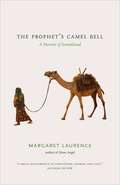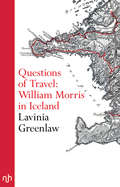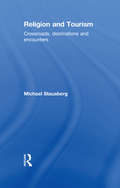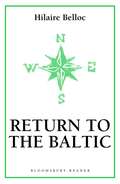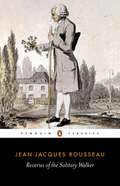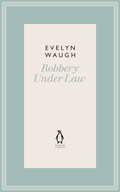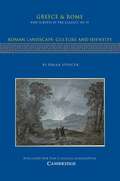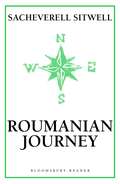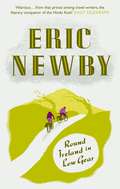- Table View
- List View
Police Car (large print)
by RnibThe police car is seen from the side, with only two of its four wheels showing at the bottom of the page. There is a locator dot shown, which will be at the top left of the page when the image is the right way up. The front (bonnet) of the car is at the left, and the rear (boot) at the right. The bumpers stick out slightly at the lower front and rear of the car. Above the front bumper is one headlight. Just to the right and slightly below this, the emergency vehicle reflective strip runs the length of the car, with one of the tail lights just above and to the right of it at the top of the boot. In the centre of the image, to the left is one front door and one rear door to the right. Each has a door handle just above the reflective strip, with a window above that. The wing mirror is shown at the lower left of the front window. At the top of the image, the blue emergency light is in the middle of the car's roof, with a tall aerial to its right.
The Politics of Tourism Development: Booms and Busts in Ireland
by A. O'BrienMoving beyond both tourism and politics literatures' current understandings of how tourism is developed, this book offers an original theory of interlocking regimes to account for the manner in which public and private bodies either facilitate or prevent development within tourism.
Propeller Aeroplane (tactile)
by Adrian FarnsworthThis is a tactile image of a propeller aeroplane seen from above and flying to the right.
The Prophet's Camel Bell: A Memoir of Somaliland
by Margaret LaurenceIn 1950, as a young bride, Margaret Laurence set out with her engineer husband to what was then Somaliland: a British protectorate in North Africa few Canadians had ever heard of. Her account of this voyage into the desert is full of wit and astonishment. Laurence honestly portrays the difficulty of colonial relationships and the frustration of trying to get along with Somalis who had no reason to trust outsiders. There are moments of surprise and discovery when Laurence exclaims at the beauty of a flock of birds only to discover that they are locusts, or offers medical help to impoverished neighbors only to be confronted with how little she can help them. During her stay, Laurence moves past misunderstanding the Somalis and comes to admire memorable individuals: a storyteller, a poet, a camel-herder. The Prophet’s Camel Bell is both a fascinating account of Somali culture and British colonial characters, and a lyrical description of life in the desert.
The Prophet's Camel Bell: A Memoir of Somaliland
by Margaret LaurenceIn 1950, as a young bride, Margaret Laurence set out with her engineer husband to what was then Somaliland: a British protectorate in North Africa few Canadians had ever heard of. Her account of this voyage into the desert is full of wit and astonishment. Laurence honestly portrays the difficulty of colonial relationships and the frustration of trying to get along with Somalis who had no reason to trust outsiders. There are moments of surprise and discovery when Laurence exclaims at the beauty of a flock of birds only to discover that they are locusts, or offers medical help to impoverished neighbors only to be confronted with how little she can help them. During her stay, Laurence moves past misunderstanding the Somalis and comes to admire memorable individuals: a storyteller, a poet, a camel-herder. The Prophet’s Camel Bell is both a fascinating account of Somali culture and British colonial characters, and a lyrical description of life in the desert.
The Prophet's Camel Bell: A Memoir of Somaliland
by Margaret LaurenceIn 1950, as a young bride, Margaret Laurence set out with her engineer husband to what was then Somaliland: a British protectorate in North Africa few Canadians had ever heard of. Her account of this voyage into the desert is full of wit and astonishment. Laurence honestly portrays the difficulty of colonial relationships and the frustration of trying to get along with Somalis who had no reason to trust outsiders. There are moments of surprise and discovery when Laurence exclaims at the beauty of a flock of birds only to discover that they are locusts, or offers medical help to impoverished neighbors only to be confronted with how little she can help them. During her stay, Laurence moves past misunderstanding the Somalis and comes to admire memorable individuals: a storyteller, a poet, a camel-herder. The Prophet’s Camel Bell is both a fascinating account of Somali culture and British colonial characters, and a lyrical description of life in the desert.
The Prophet's Camel Bell: A Memoir of Somaliland
by Margaret LaurenceIn 1950, as a young bride, Margaret Laurence set out with her engineer husband to what was then Somaliland: a British protectorate in North Africa few Canadians had ever heard of. Her account of this voyage into the desert is full of wit and astonishment. Laurence honestly portrays the difficulty of colonial relationships and the frustration of trying to get along with Somalis who had no reason to trust outsiders. There are moments of surprise and discovery when Laurence exclaims at the beauty of a flock of birds only to discover that they are locusts, or offers medical help to impoverished neighbors only to be confronted with how little she can help them. During her stay, Laurence moves past misunderstanding the Somalis and comes to admire memorable individuals: a storyteller, a poet, a camel-herder. The Prophet’s Camel Bell is both a fascinating account of Somali culture and British colonial characters, and a lyrical description of life in the desert.
Questions of Travel: William Morris in Iceland
by Lavinia GreenlawThe great Victorian William Morris was fascinated by Iceland, which inspired him to write one of the masterpieces of travel literature. Poet Lavinia Greenlaw travels in his footsteps, combining excerpts from his Icelandic writings with her own response to the country.
Railway Truck (tactile)
by Sheffield Vi ServiceThis is an image of a railway truck on rail track, seen from the side. At the top of the image part of the truck's load can be found. The truck is a rectangular shape and has two circular wheels further down the page. The wheels sit on a section of the rail track, which runs horizontally across the bottom part of the page.
Religion and Tourism: Crossroads, Destinations and Encounters
by Michael StausbergThis book explores the dynamic interaction between religion and tourism in the modern world. It considers questions such as: do travellers leave their religion at home when they are touring – and what happens if not? what are the relationships between tourism and pilgrimage? what happens to religious performances, places and festivals that function as tourism attractions? Other chapters examine religious theme parks, wellness and spa tourism, the roles played by tourist guides, guidebooks and religious souvenirs, and the role of tourism as a major arena of religious encounters in the contemporary world. Surveying the growing body of work in the field, Michael Stausberg argues that tourism should be a major focus of research within religious studies.
Religion and Tourism: Crossroads, Destinations and Encounters
by Michael StausbergThis book explores the dynamic interaction between religion and tourism in the modern world. It considers questions such as: do travellers leave their religion at home when they are touring – and what happens if not? what are the relationships between tourism and pilgrimage? what happens to religious performances, places and festivals that function as tourism attractions? Other chapters examine religious theme parks, wellness and spa tourism, the roles played by tourist guides, guidebooks and religious souvenirs, and the role of tourism as a major arena of religious encounters in the contemporary world. Surveying the growing body of work in the field, Michael Stausberg argues that tourism should be a major focus of research within religious studies.
Return to the Baltic
by Hilaire BellocHere, Belloc writes of a trip through Sweden and Denmark in 1938, a nostalgic trip taken forty-three years after his first Scandanvian trip in 1895.This volume includes Belloc's history and topography of the area.
Revenue Management for the Hospitality Industry
by David K. Hayes Allisha MillerRevenue Management for the Hospitality Industry is filled with practical examples and best practices on the topic of revenue management, a critical aspect of the industry. Through numerous revenue management examples from the hospitality industry and a running case example throughout the book, students will discover how they can incorporate revenue management principles and best practices. The core of revenue management of a hospitality organisation is to, as the authors explain, "charge the right price, to the right customer, for the right product, through the right channel, at the right time." The book is intended for students with prior knowledge and understanding of the hospitality industry, and will explain what they need to know and how to be successful.
Reveries of the Solitary Walker: With The Reveries Of The Solitary Walker, Volumes 1-2 (Oxford World's Classics #No. 85)
by Jean-Jacques Rousseau Peter FranceAfter a period of forced exile and solitary wandering brought about by his radical views on religion and politics, Jean-Jacques Rousseau returned to Paris in 1770. Here, in the last two years of his life, he wrote his final work, the Reveries. In this eloquent masterpiece the great political thinker describes his sense of isolation from a society he felt had rejected his writings - and the manner in which he has come to terms with his alienation, as he walks around Paris, gazing at plants, day-dreaming and finding comfort in the virtues of solitude and the natural world. Meditative, amusing and lyrical, this is a fascinating exploration of Rousseau's thought as he looks back over his life, searching to justify his actions, to defend himself against his critics and to elaborate upon his philosophy.
Rickshaw (large print)
by RnibThis image shows two people, one on the left and one on the right of the page. There is also a rickshaw which is mainly on the left. There is a locator dot shown, which will be at the top left of the page when the image is the correct way up. The people are shown from the side so only one eye and arm can be found. The person on the left is facing right sitting in the rickshaw. In the top left of the image is the canvas roof of the rickshaw. It is held up by four metal stays (only two are shown), which can fold up together, folding the roof up like a pram hood. Down from the roof is the man's head facing right. The top of his head is hidden by the roof. To the left of his upper body is a hard vertical backrest. His arm comes down and goes to the right with his hand near his knee. His bottom, most of his leg and foot is hidden by the sidewall of the rickshaw. Down from the rickshaw body is one of the two large spoked wheels. Going right from the bottom of the rickshaw body is a pole. This goes to the right of the image where it is held by the other man. The structure of the rickshaw that supports and connects the body to the wheel axle has not been shown for clarity. The person on the right of the page is shown walking and facing to the right. He has short dark brown hair and wears a pale grey cotton vest. His upper arm goes down and left, bends at the elbow and runs right, along the rickshaw pole. He holds the end of the pole as he pulls the rickshaw along. There will be a second pole also attached to the rickshaw body on the other side of the man which he will pull with his other arm. Down from his arm are his legs which are apart as he walks. He wears blue trousers. He has lightweight shoes on his feet at the bottom of the page. Hand-pulled rickshaws are being replaced by cycle rickshaws. A cycle rickshaw is a large tricycle with a seat for two people to sit between the two rear wheels.
Rickshaw (UEB contracted)
by RnibThis image shows two people, one on the left and one on the right of the page. There is also a rickshaw which is mainly on the left. There is a locator dot shown, which will be at the top left of the page when the image is the correct way up. The people are shown from the side so only one eye and arm can be found. The person on the left is facing right sitting in the rickshaw. In the top left of the image is the canvas roof of the rickshaw. It is held up by four metal stays (only two are shown), which can fold up together, folding the roof up like a pram hood. Down from the roof is the man's head facing right. The top of his head is hidden by the roof. To the left of his upper body is a hard vertical backrest. His arm comes down and goes to the right with his hand near his knee. His bottom, most of his leg and foot is hidden by the sidewall of the rickshaw. Down from the rickshaw body is one of the two large spoked wheels. Going right from the bottom of the rickshaw body is a pole. This goes to the right of the image where it is held by the other man. The structure of the rickshaw that supports and connects the body to the wheel axle has not been shown for clarity. The person on the right of the page is shown walking and facing to the right. He has short dark brown hair and wears a pale grey cotton vest. His upper arm goes down and left, bends at the elbow and runs right, along the rickshaw pole. He holds the end of the pole as he pulls the rickshaw along. There will be a second pole also attached to the rickshaw body on the other side of the man which he will pull with his other arm. Down from his arm are his legs which are apart as he walks. He wears blue trousers. He has lightweight shoes on his feet at the bottom of the page. Hand-pulled rickshaws are being replaced by cycle rickshaws. A cycle rickshaw is a large tricycle with a seat for two people to sit between the two rear wheels.
Rickshaw (UEB uncontracted)
by RnibThis image shows two people, one on the left and one on the right of the page. There is also a rickshaw which is mainly on the left. There is a locator dot shown, which will be at the top left of the page when the image is the correct way up. The people are shown from the side so only one eye and arm can be found. The person on the left is facing right sitting in the rickshaw. In the top left of the image is the canvas roof of the rickshaw. It is held up by four metal stays (only two are shown), which can fold up together, folding the roof up like a pram hood. Down from the roof is the man's head facing right. The top of his head is hidden by the roof. To the left of his upper body is a hard vertical backrest. His arm comes down and goes to the right with his hand near his knee. His bottom, most of his leg and foot is hidden by the sidewall of the rickshaw. Down from the rickshaw body is one of the two large spoked wheels. Going right from the bottom of the rickshaw body is a pole. This goes to the right of the image where it is held by the other man. The structure of the rickshaw that supports and connects the body to the wheel axle has not been shown for clarity. The person on the right of the page is shown walking and facing to the right. He has short dark brown hair and wears a pale grey cotton vest. His upper arm goes down and left, bends at the elbow and runs right, along the rickshaw pole. He holds the end of the pole as he pulls the rickshaw along. There will be a second pole also attached to the rickshaw body on the other side of the man which he will pull with his other arm. Down from his arm are his legs which are apart as he walks. He wears blue trousers. He has lightweight shoes on his feet at the bottom of the page. Hand-pulled rickshaws are being replaced by cycle rickshaws. A cycle rickshaw is a large tricycle with a seat for two people to sit between the two rear wheels.
Robbery Under Law
by Evelyn WaughIn Robbery Under Law, subtitled 'The Mexican Object Lesson', Waugh presents a profoundly unpeaceful Mexican situation as a cautionary tale in which a once great civilisation - greater than the United States at the turn of the twentieth century - has succumbed, within the space of a single generation, to barbarism.
Roman Landscape: Culture And Identity (New Surveys In The Classics Ser. #39)
by Diana SpencerThis book tackles how and why 'landscape' (farms, gardens, countryside) set the scene in the first centuries BCE and CE for Romans keen to talk up and about (but also to scrutinize and understand) what it meant to be a citizen. It investigates what 'landscape' means now and reflects upon how contemporary approaches to 'landscape' can enrich our understanding of ancient experience of the interface between natural and artificial space. It encourages examination of 'landscape' from a range of angles, suggesting alternative ways of thinking about what landscape represents. These methodological approaches (presented initially via a set of key terms and definitions and then deployed thematically across four chapters), combined with a detailed interdisciplinary bibliography and a series of case studies of literary texts and material sites, enable readers to use this survey as a starting point for developing their own in-depth study.
Roumanian Journey
by Sacheverell Sitwell'At the first mention of going to Roumania, a great many people, as I did myself, would take down their atlas and open the map. For Roumania, there can be no question, is among the lesser known lands of Europe.'So begins Sir Sacheverell Sitwell's account of his Roumanian journey, made in the 1930s, when Bucharest was still eight days overland from London.His four-week trip brings him into contact with longhaired gypsies at country fairs as well as the aristocracy in their medieval castles. The natural richness and variety of the landscape-from Transylvania to the Wallachian plains, the Carpathian peaks to the Danube Delta-delight him, as does the diversity of humanity he encounters, while his deep knowledge of European art and architecture makes him the ideal guide to the paintings, frescos, and buildings of Roumania.It is impossible, of course, to read of Roumania in the 1930s without thinking of what lay ahead for that country, but the abiding impression left by the book is of the freshness of Sitwell's perceptions and his unquenchable curiosity in everything he saw.
Round Ireland in Low Gear (Lonely Planet Journeys Ser.)
by Eric Newby'You've had some pretty crazy ideas in your life, Newby, but this is the craziest.' Grandmother Wanda Newby was exasperated after continuous rain, snow, and gales that knocked from her bike. Twice.
Scottish Aviation Jetstream - Twin-engined Pilot Trainer (large print)
by RnibThis is an image of an aircraft seen from above. There is a locator dot shown, which will be at the top left of the page when the image is the correct way up. The image is in the centre and a scale in metres on the left of the page. The aircraft's nose is in the top centre and the tail in the bottom centre of the page. The fuselage goes up and down the middle of the page. The cockpit is shown as a curved window near the nose. The wings go out to the left and right. Sticking out from the front edge of each wing there is an engine with a propeller to the left and right of the fuselage. The bottom edge of the wing has three flaps on each side and the tail wing has one flap on each side. These are the ailerons used to manoeuvre the aircraft when it is flying. The tailplane has a long vertical tail which starts to rise from the fuselage just down from the centre of the image. The tail wing sticks out from the vertical tail halfway up it. The tips of the main wings and the leading half of the tailplane are red. The upper half of the fuselage is red, apart from the nose only a small part of this can be seen. The roof is white. The textures on the tactile image reflect structure not colour. There is a different texture for cockpit, wings, fuselage and engine.
Scottish Aviation Jetstream - Twin-engined Pilot Trainer (UEB contracted)
by RnibThis is an image of an aircraft seen from above. There is a locator dot shown, which will be at the top left of the page when the image is the correct way up. The image is in the centre and a scale in metres on the left of the page. The aircraft's nose is in the top centre and the tail in the bottom centre of the page. The fuselage goes up and down the middle of the page. The cockpit is shown as a curved window near the nose. The wings go out to the left and right. Sticking out from the front edge of each wing there is an engine with a propeller to the left and right of the fuselage. The bottom edge of the wing has three flaps on each side and the tail wing has one flap on each side. These are the ailerons used to manoeuvre the aircraft when it is flying. The tailplane has a long vertical tail which starts to rise from the fuselage just down from the centre of the image. The tail wing sticks out from the vertical tail halfway up it. The tips of the main wings and the leading half of the tailplane are red. The upper half of the fuselage is red, apart from the nose only a small part of this can be seen. The roof is white. The textures on the tactile image reflect structure not colour. There is a different texture for cockpit, wings, fuselage and engine.
Scottish Aviation Jetstream - Twin-engined Pilot Trainer (UEB uncontracted)
by RnibThis is an image of an aircraft seen from above. There is a locator dot shown, which will be at the top left of the page when the image is the correct way up. The image is in the centre and a scale in metres on the left of the page. The aircraft's nose is in the top centre and the tail in the bottom centre of the page. The fuselage goes up and down the middle of the page. The cockpit is shown as a curved window near the nose. The wings go out to the left and right. Sticking out from the front edge of each wing there is an engine with a propeller to the left and right of the fuselage. The bottom edge of the wing has three flaps on each side and the tail wing has one flap on each side. These are the ailerons used to manoeuvre the aircraft when it is flying. The tailplane has a long vertical tail which starts to rise from the fuselage just down from the centre of the image. The tail wing sticks out from the vertical tail halfway up it. The tips of the main wings and the leading half of the tailplane are red. The upper half of the fuselage is red, apart from the nose only a small part of this can be seen. The roof is white. The textures on the tactile image reflect structure not colour. There is a different texture for cockpit, wings, fuselage and engine.
Scottish Aviation Twin Pioneer- STOL Tactical Light Transport (large print)
by RnibThis is an image of an aircraft seen from above. There is a locator dot shown, which will be at the top left of the page when the image is the correct way up. The image is in the centre and a scale in metres on the left of the page. The aircraft's nose is in the top centre and the tail in the bottom centre of the page. The fuselage goes up and down the middle of the page. The cockpit is shown as two small windows near the nose. The wings go out to the left and right. Sticking out from the front edge of each wing is an engine with propellers, to the left and right of the fuselage. The bottom edge of the wing has three flaps on each side and the tail wing has one flap on each side. These are the ailerons used to manoeuvre the aircraft when it is flying. The tailplane has three vertical tails, one in the middle and one to either side. The tips of the main wings and the leading half of the tailplane are red. The upper half of the fuselage is red, apart from the nose only a small part of this can be seen. The roof is white. The textures on the tactile image reflect structure not colour. There is a different texture for the cockpit, wings, fuselage and engine.


